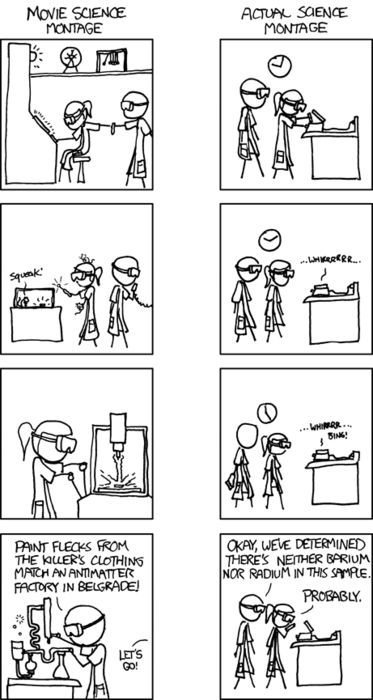
The Author begins the new decade of XKCD with an unusually formatted parallel timeline. On the left, “movie scientists” perform a series of activities in a “montage”. On the right “actual scientists” do the same. The movie scientists are seen performing a wildly varying series of tasks in a set of dizzying locales, finally coming to the conclusion that “the killer” is connected to an antimatter factory in Belgrade. The actual scientists stand over a small device (perhaps a mass spectrometer?) and wait an indeterminable period for it to finish, concluding that neither Barium nor Radium are present in the sample.
The punchline implicit in this comparison is that “movie science” makes the scientific process out to be as glamourous and outrageous as everything else that Hollywood reflects, whereas real science is often a boring, meticulous, and uncertain process. To the informed audience, the notion of combining animal research with particle emitters and outlandish chemistry rigs is deliciously ridiculous, with the linguistic icing of paint and antimatter combined. But to the uninformed audience, the idea that “real people” sit around waiting for an impossibly complex and inscrutable computer to tell them the answer to a tiny question is surely equally absurd, and the lack of certainty only making it more laughable.
This process of multi-layered humor that appeals to a broad audience is one fo the hallmarks of the Author, who has exhibited a talent for this many times before. It is in no small part thanks to this talent that XKCD is so incredibly popular.
